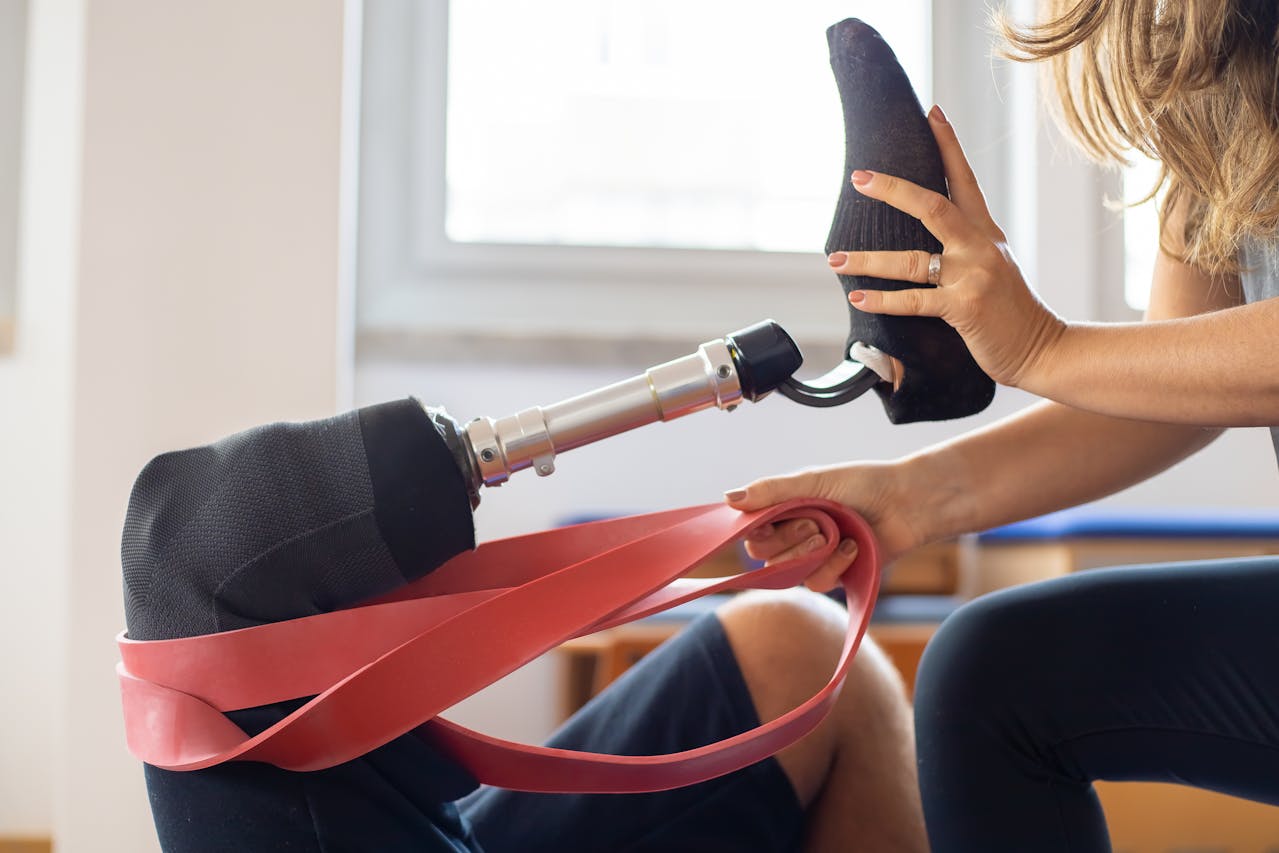Extreme sports are all about pushing the limits of human ability, often in environments that challenge the body and mind to their fullest extent. From snowboarding down steep mountains to surfing giant waves, these activities require immense physical strength, agility, and mental toughness. Traditionally, these sports were considered the domain of the able-bodied, but in recent years, advancements in prosthetic technology have opened up new possibilities for athletes with limb differences. Prosthetics, once viewed as merely a means of restoring basic mobility, are now being engineered specifically for the demands of extreme sports, enabling athletes to not only participate but excel.
In this article, we’ll explore how prosthetics are being used in extreme sports, highlighting the innovations that have made this possible, the athletes who are leading the way, and the challenges that still remain.
1. The Evolution of Sports Prosthetics
The use of prosthetics in sports is not new, but the technology has come a long way since the early days. Traditional prosthetics were designed primarily for walking, with little consideration for the demands of athletic activities. However, as more athletes with amputations began to push the boundaries of what was possible, the need for specialized sports prosthetics became clear.
Modern sports prosthetics are designed with specific activities in mind. For example, running blades, made famous by Paralympic sprinters, are designed to mimic the spring-like action of a foot during a sprint. These blades are made from lightweight, durable materials like carbon fiber, allowing them to withstand the impact and stresses of high-speed running.
In extreme sports, the requirements are even more specific. Athletes need prosthetics that can handle the unique challenges of their chosen sport, whether it’s the shock absorption needed for skateboarding, the waterproofing required for surfing, or the flexibility needed for rock climbing. This has led to the development of a wide range of prosthetics tailored to different sports, each designed to enhance performance while ensuring safety.
2. Prosthetics in Action Sports
Action sports, such as skateboarding, BMX biking, and snowboarding, are known for their high energy, fast pace, and the need for precise control. For athletes with prosthetics, these sports present unique challenges, but also opportunities to showcase their skills and resilience.
In skateboarding, for example, athletes use prosthetic legs that are specifically designed to handle the repeated impacts and vibrations of landing tricks. These prosthetics often feature shock-absorbing elements and flexible joints that allow for a greater range of motion, enabling skaters to perform complex maneuvers with confidence.
Similarly, in BMX biking, riders require prosthetics that can endure the intense forces exerted during jumps and stunts. Some BMX athletes use customized knee prosthetics with reinforced joints and shock absorbers, allowing them to land safely while maintaining control of the bike. The ability to adjust the prosthetic’s stiffness and range of motion is crucial for these athletes, as it allows them to tailor their setup to different riding conditions.
Snowboarding, another popular action sport, requires prosthetics that can adapt to the varied terrain and dynamic movements of the sport. Snowboarders often use prosthetics with specialized footplates that mimic the flex and responsiveness of a snowboard boot. These prosthetics may also include rotation mechanisms, allowing the rider to pivot and turn smoothly while maintaining balance.
3. Water Sports and Prosthetics
Water sports like surfing, wakeboarding, and swimming present a different set of challenges for athletes with prosthetics. The need for waterproof materials, combined with the demands of balance and buoyancy, makes these sports particularly challenging. However, advancements in prosthetic design have enabled athletes to conquer the waves.
In surfing, for instance, prosthetics are designed to be lightweight and resistant to corrosion from saltwater. Surfers with lower limb amputations often use prosthetics with flexible ankles, allowing them to maintain a natural stance on the board. The prosthetic foot may be designed to grip the surfboard effectively, providing stability as the surfer navigates the waves.
For wakeboarding, athletes need prosthetics that can withstand the force of being pulled at high speeds while maintaining control on the water. These prosthetics often feature reinforced joints and waterproof components, ensuring they remain functional even after prolonged exposure to water. Some athletes use prosthetics with quick-release mechanisms, allowing them to easily detach the prosthetic in case of a fall.
Swimming, a sport where limb loss can significantly impact buoyancy and propulsion, has also seen the development of specialized prosthetics. Swimmers with lower limb amputations might use prosthetics that are designed to streamline the body and reduce drag in the water. These prosthetics can be customized to enhance the swimmer’s kick, allowing them to maintain speed and efficiency in the water.
4. Climbing and Mountaineering with Prosthetics
Rock climbing and mountaineering are among the most physically demanding extreme sports, requiring strength, agility, and endurance. For climbers with prosthetics, these sports present both a physical and technical challenge, but with the right equipment, they can reach new heights—literally.
Climbers with lower limb amputations often use prosthetic feet that are specially designed for climbing. These prosthetics may have a rigid, pointed toe that can fit into small footholds, providing the climber with a secure grip on the rock face. Some prosthetic designs allow for the foot to be rotated or adjusted, giving the climber greater flexibility when navigating difficult routes.
For mountaineering, the challenges are even greater. Athletes need prosthetics that can endure the harsh conditions of high altitudes, including extreme cold, rough terrain, and long periods of use. Prosthetic legs for mountaineering are typically made from lightweight, durable materials like carbon fiber, and may include insulation to protect against the cold. These prosthetics are also designed to be highly adjustable, allowing the mountaineer to change the angle or length of the prosthetic to suit different terrains.
5. Overcoming Challenges and Inspiring Others
While the advancements in prosthetic technology have made it possible for athletes with limb differences to participate in extreme sports, the journey is not without its challenges. Athletes must learn to adapt to their prosthetics, often through a process of trial and error, and develop the physical and mental strength needed to excel in their chosen sport.
Moreover, the cost of specialized sports prosthetics can be prohibitively high, limiting access for some athletes. Despite these challenges, many athletes have not only succeeded in extreme sports but have also become role models and advocates for the broader amputee community.
Athletes like Amy Purdy, a Paralympic snowboarder and motivational speaker, have shown that limb loss is not a barrier to achieving greatness. Through her accomplishments, Purdy has inspired countless others to pursue their passions, regardless of physical limitations. Similarly, adaptive athletes in sports like surfing, skateboarding, and climbing have demonstrated that with the right mindset and equipment, anything is possible.
Conclusion
The use of prosthetics in extreme sports is a testament to human innovation and resilience. As technology continues to advance, we can expect to see even more athletes with limb differences pushing the boundaries of what is possible. Prosthetics designed for extreme sports are not just tools for participation—they are enablers of excellence, allowing athletes to perform at the highest levels and inspiring others to do the same.
The future of prosthetics in extreme sports is bright, with ongoing developments in materials, design, and customization offering new opportunities for athletes to explore their potential. As more athletes take to the waves, mountains, and skateparks with their prosthetics, they are not just participating—they are redefining the limits of human ability.



